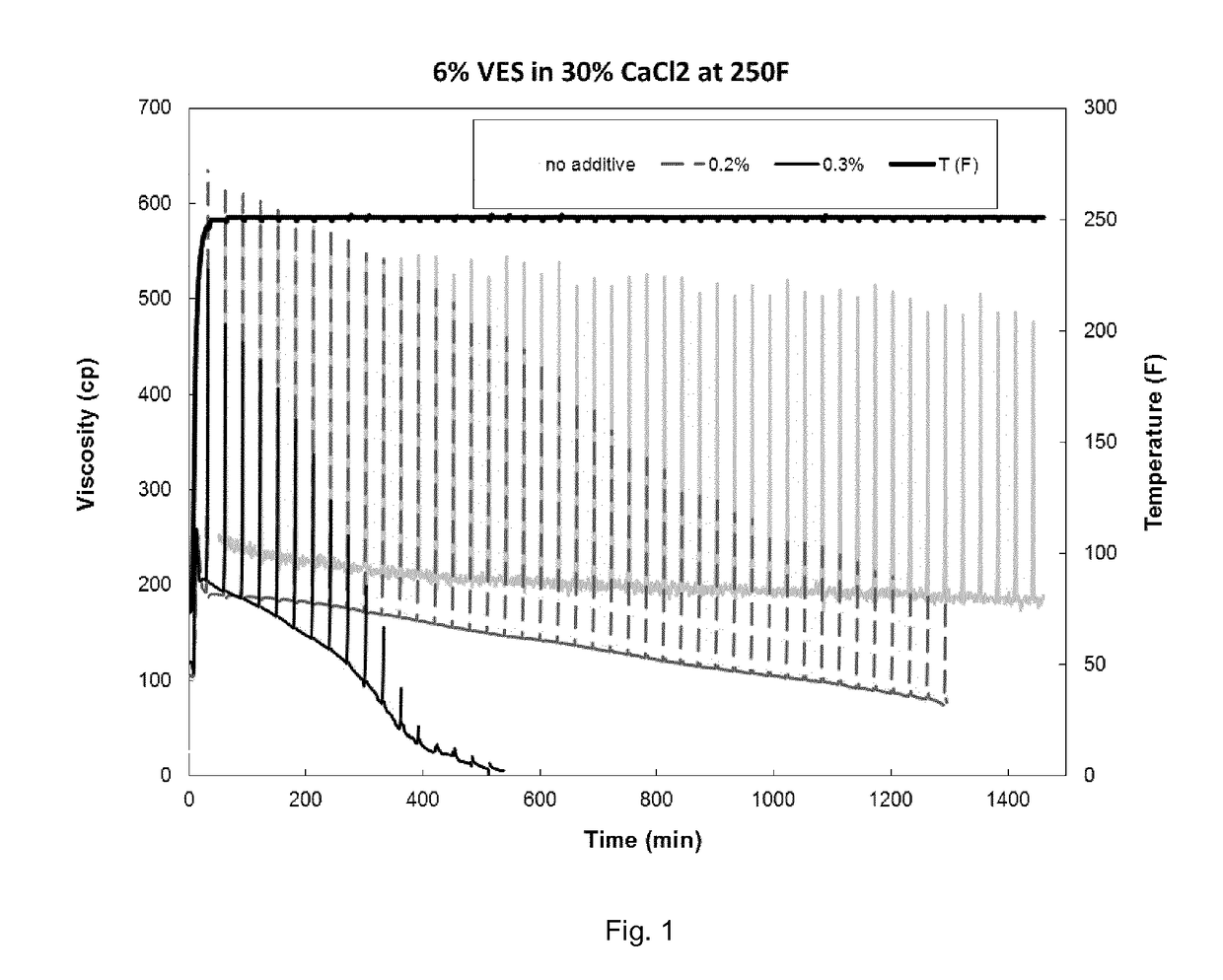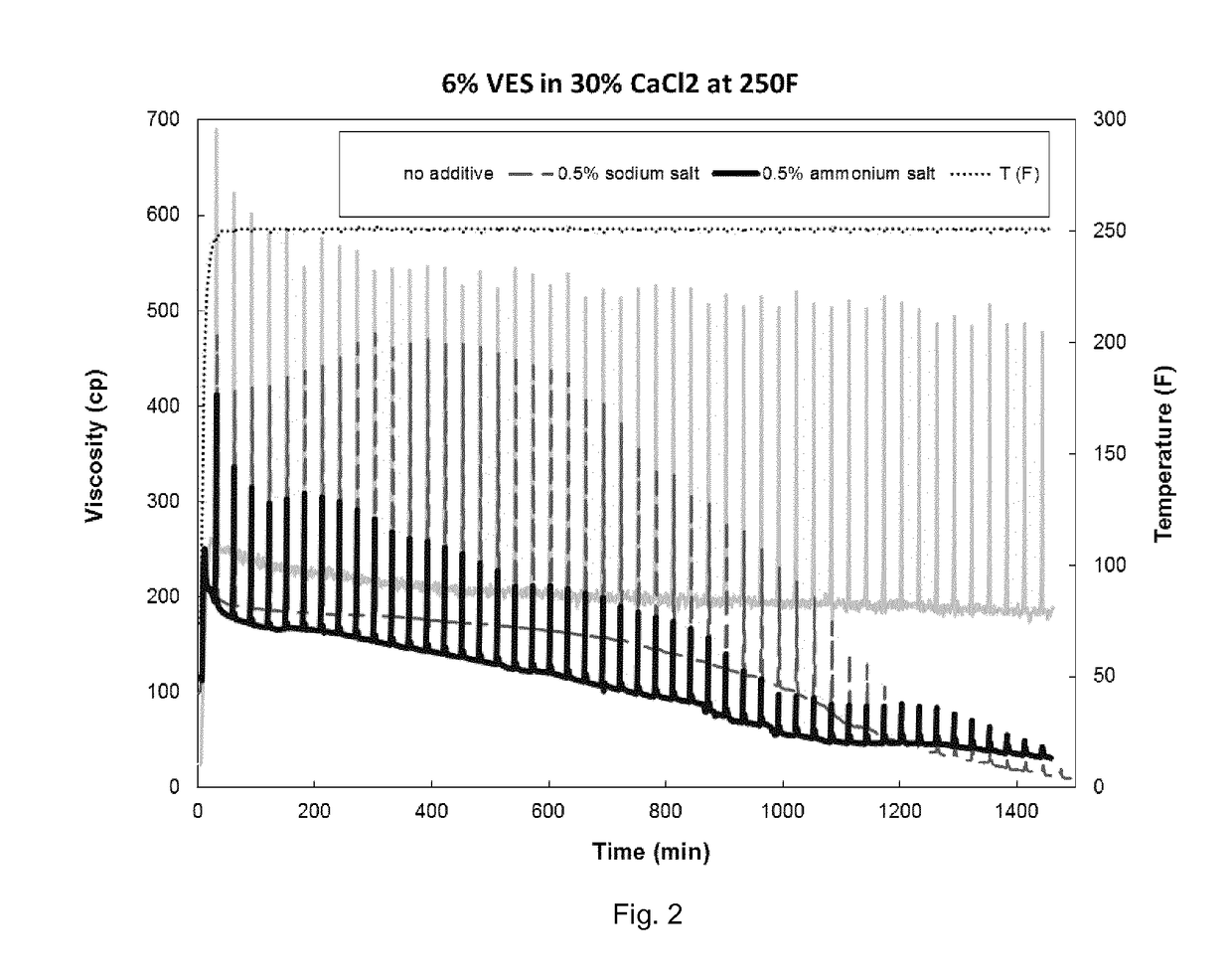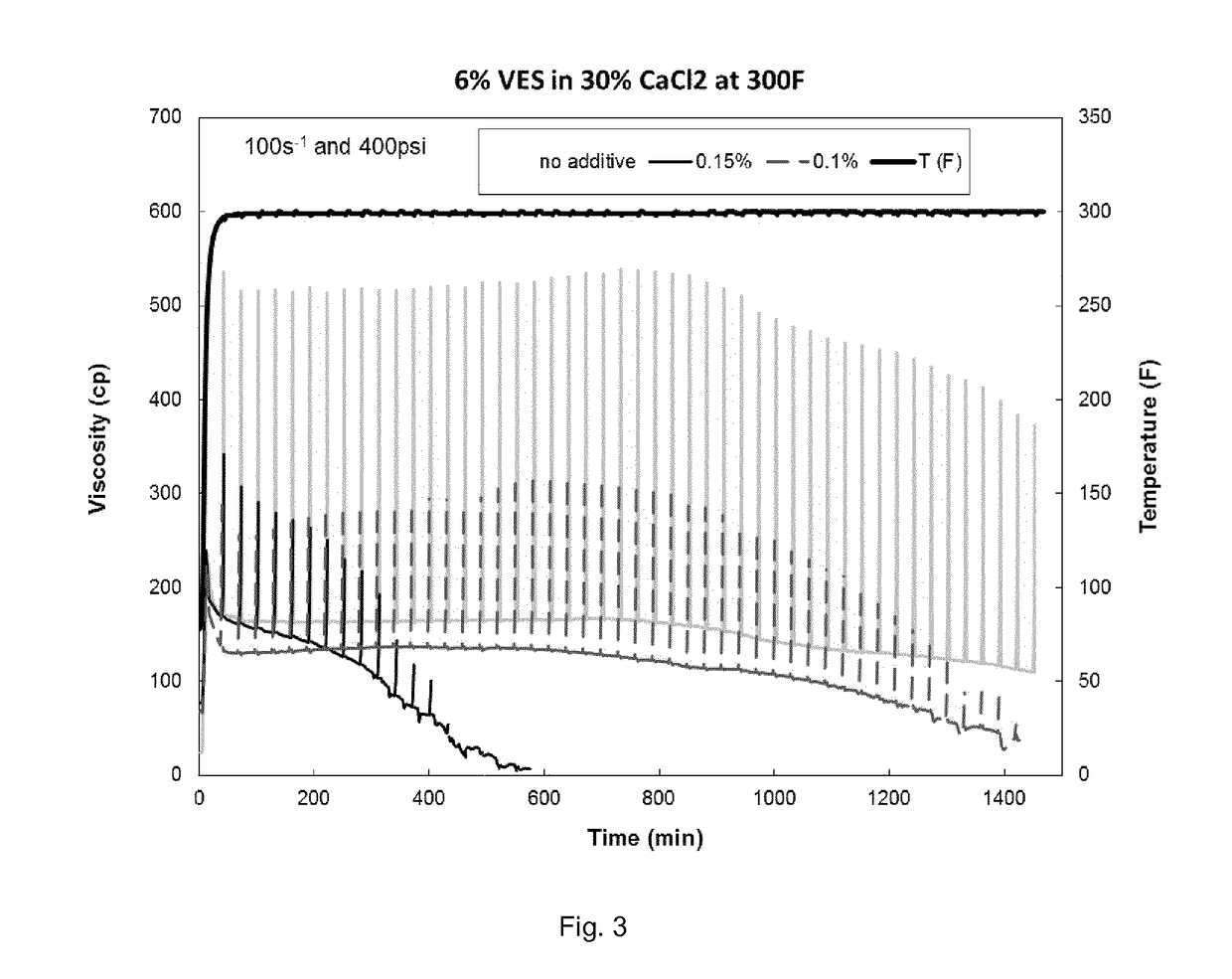Delayed breaker for viscoelastic surfactant-based fluids
a technology of viscoelastic surfactant and breaker, which is applied in the direction of fluid removal, chemistry apparatus and processes, and well accessories, etc., can solve the problems of limited interaction with the gel, impede the recovery of desired subterranean oil or gas, and difficult removal, so as to improve oil production, reduce fluid leakage, and high permeability
- Summary
- Abstract
- Description
- Claims
- Application Information
AI Technical Summary
Benefits of technology
Problems solved by technology
Method used
Image
Examples
example 1
[0084]This example demonstrates the use of Breaker Composition A as a delayed breaker at 250° F. Three samples of a viscous fluid containing 6 vol % erucamidopropyl hydroxypropylsultaine and 30 wt % CaCl2 were prepared, to which were added Breaker Composition A at concentrations of 0, 0.2, and 0.3 vol % respectively. The data illustrated in FIGS. 1A, 1B, and 1C show that the elasticity decreased with time. Higher dosage of delayed breaker gave lower viscosity and faster observed breaking.
example 2
[0085]This example demonstrates the use of sodium and ammonium salts of Breaker Composition A as delayed breakers at 250° F. Three samples of a viscous fluid containing 6 vol % erucamidopropyl hydroxypropylsultaine and 30 wt % CaCl2 were prepared, to which were added no breaker, 0.5 vol % of the ammonium salt of Breaker Composition A, and 0.5% of the sodium salt of Breaker Composition A, respectively. The data in FIG. 2 show that the neutralized delayed breakers also can function effectively as delayed breakers of the VES composition.
example 3
[0086]This example demonstrates the use of ammonium salts of Breaker Composition A as delayed breakers at 300° F. Three samples of a viscous fluid containing 6 vol % erucamidopropyl hydroxypropylsultaine and 30 wt % CaCl2 were prepared, to which were added the ammonium salt of Breaker Composition A at concentrations of 0, 0.1, and 0.15 vol %, respectively. The data in FIG. 3 show that the breaking time decreased with the increased concentration of delayed breaker.
PUM
| Property | Measurement | Unit |
|---|---|---|
| concentrations | aaaaa | aaaaa |
| pressure | aaaaa | aaaaa |
| temperature | aaaaa | aaaaa |
Abstract
Description
Claims
Application Information
 Login to View More
Login to View More - R&D
- Intellectual Property
- Life Sciences
- Materials
- Tech Scout
- Unparalleled Data Quality
- Higher Quality Content
- 60% Fewer Hallucinations
Browse by: Latest US Patents, China's latest patents, Technical Efficacy Thesaurus, Application Domain, Technology Topic, Popular Technical Reports.
© 2025 PatSnap. All rights reserved.Legal|Privacy policy|Modern Slavery Act Transparency Statement|Sitemap|About US| Contact US: help@patsnap.com



